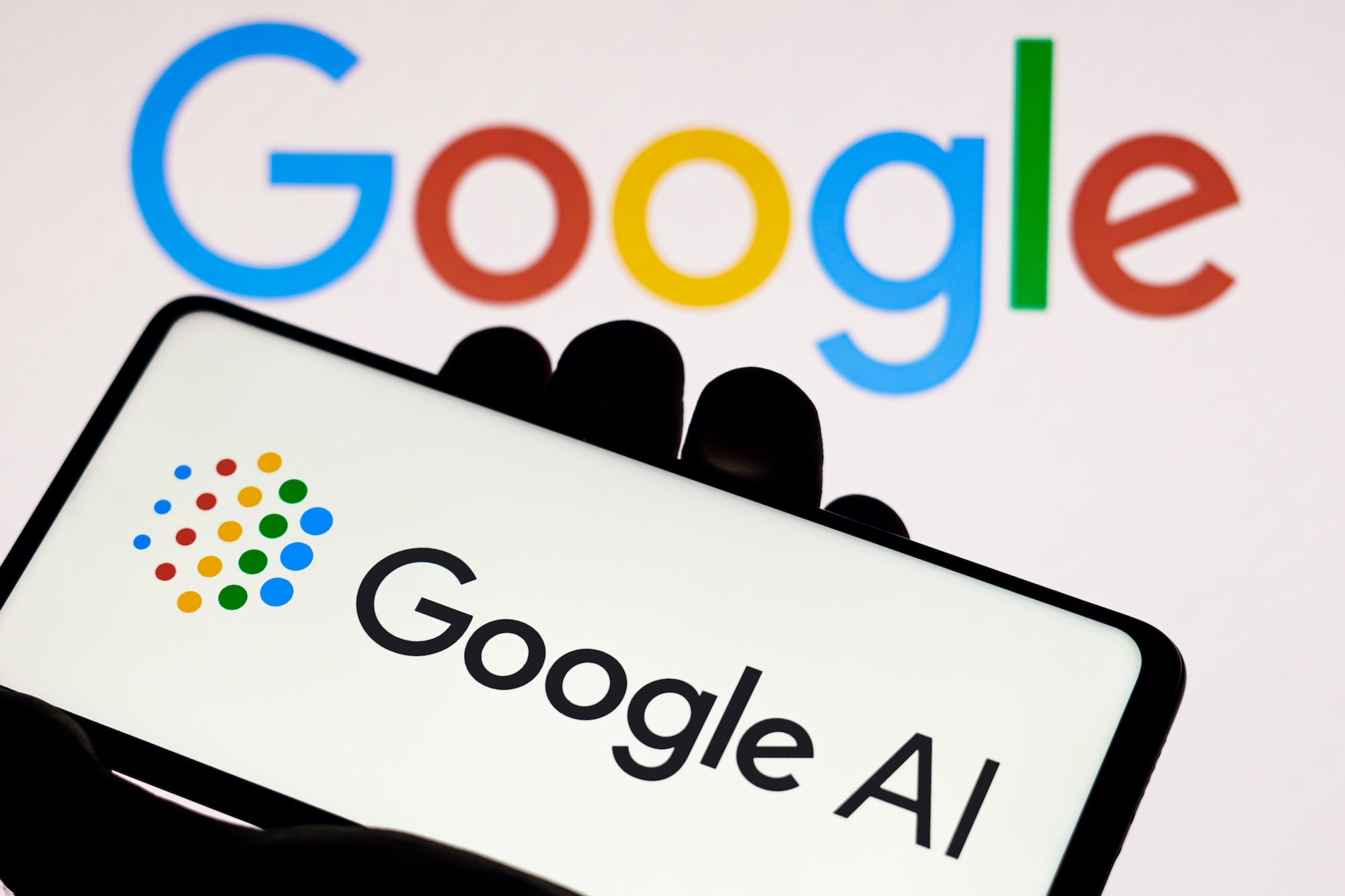At today’s Google Marketing Live, Google is expected to announce several new generative AI advancements for Google Ads, Performance Max, Product Studio, and Search Generative Experience (SGE) in Search Labs.
Google hopes to make it easier for advertisers and merchants to create customized product imagery, manage creative assets, improve ad relevancy, and scale campaigns.
We look forward to hearing more about the following new features and improvements at Google Marketing Live with speakers from Google, Samsung, Vans, and Wheel the World.
Google Ads: Conversational Experience & Automatically Created Assets
Responding to concerns from advertisers about the complexity of initiating new campaigns, Google will unveil a new, user-friendly conversational interface within Google Ads.
Google Ads AI will analyze landing pages and ads, condensing the content to generate relevant keywords, headlines, descriptions, images, and other creative assets for Google Ads campaigns.
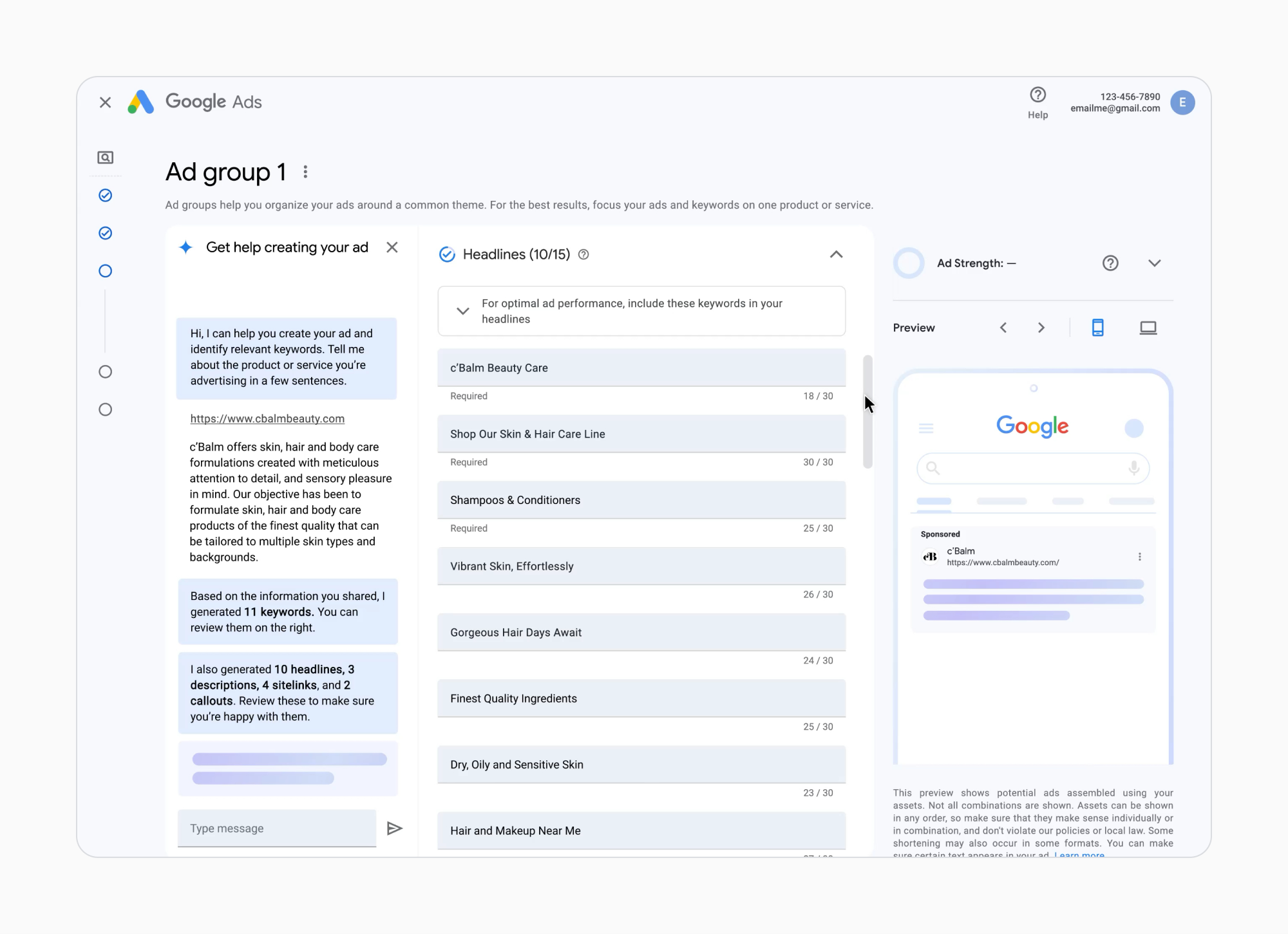 Screenshot from Google, May 2023
Screenshot from Google, May 2023These AI-driven suggestions are presented for your review and can be effortlessly modified before launch.
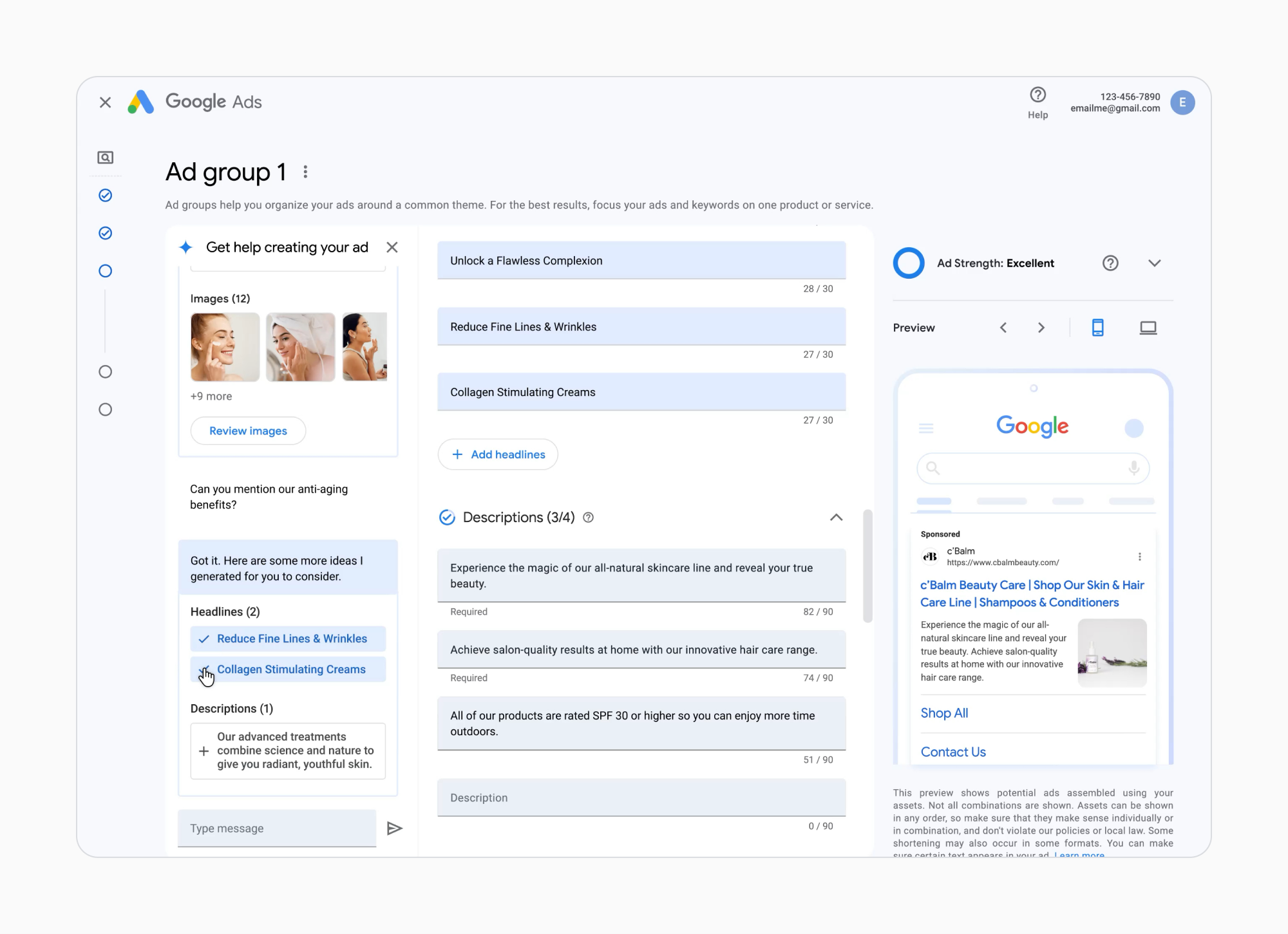 Screenshot from Google, May 2023
Screenshot from Google, May 2023Automatically created assets (ACA) will use generative AI to improve ad relevancy by analyzing your landing pages and ads, and adapting Search ads to the context of user search queries.
One example is how ACA could adapt the ad headline and description for a “skin care for dry sensitive skin” query.
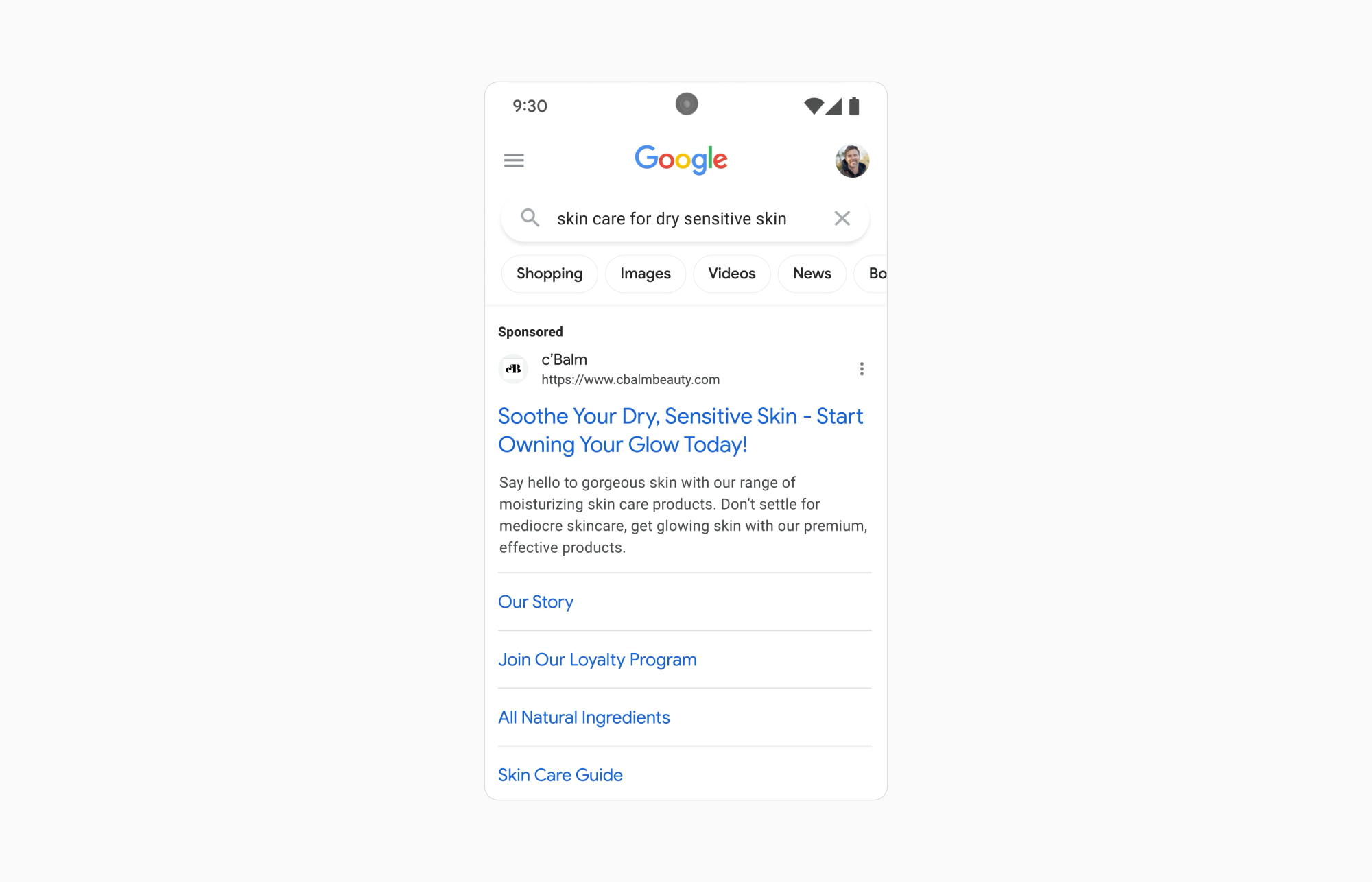 Screenshot from Google, May 2023
Screenshot from Google, May 2023By providing a more conversational approach to campaign creation, Google could introduce a digital assistant to advertisers offering Google AI ideas and advice.
It could also open new avenues for advertisers to improve campaign performance through intelligent, interactive dialogue familiar with the advertiser’s content and ad history.
Generative AI & Performance Max
Google will spotlight Performance Max as a prime example of how AI-powered campaigns can stimulate business growth.
Advertisers employing Performance Max have reported an impressive rise in conversions – averaging over 18%, up from 13% just a year ago, all achieved at a comparable cost per action.
Starting today, Google will incorporate generative AI into Performance Max, simplifying the process of creating and expanding custom assets.
Once you provide your website, Google AI begins to familiarize itself with your brand, populating your campaign with relevant text and other assets.
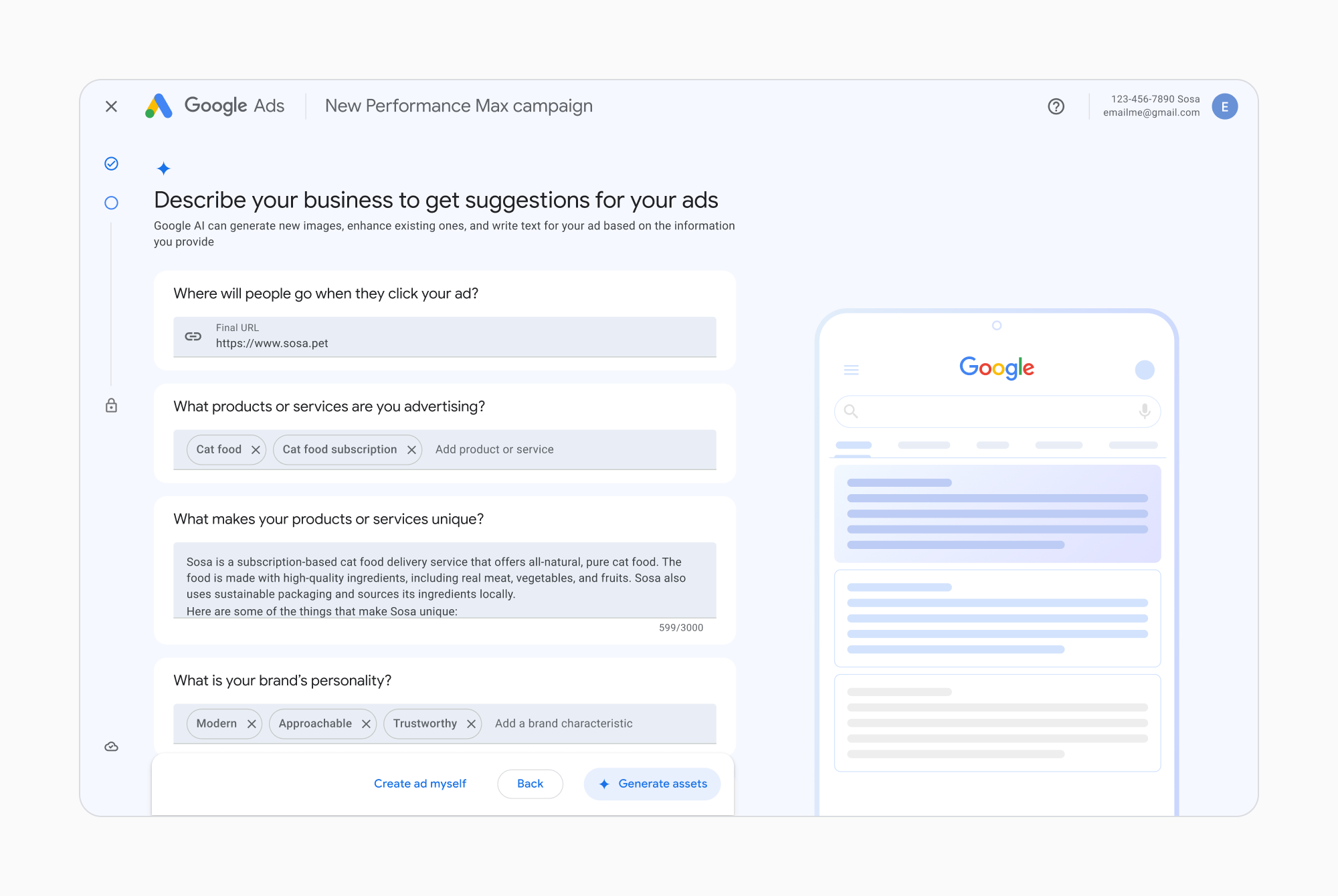 Screenshot from Google, May 2023
Screenshot from Google, May 2023Unique images, specially generated for you, are also suggested by Google AI, enabling your brand to captivate customers across a broader spectrum of inventory and formats.
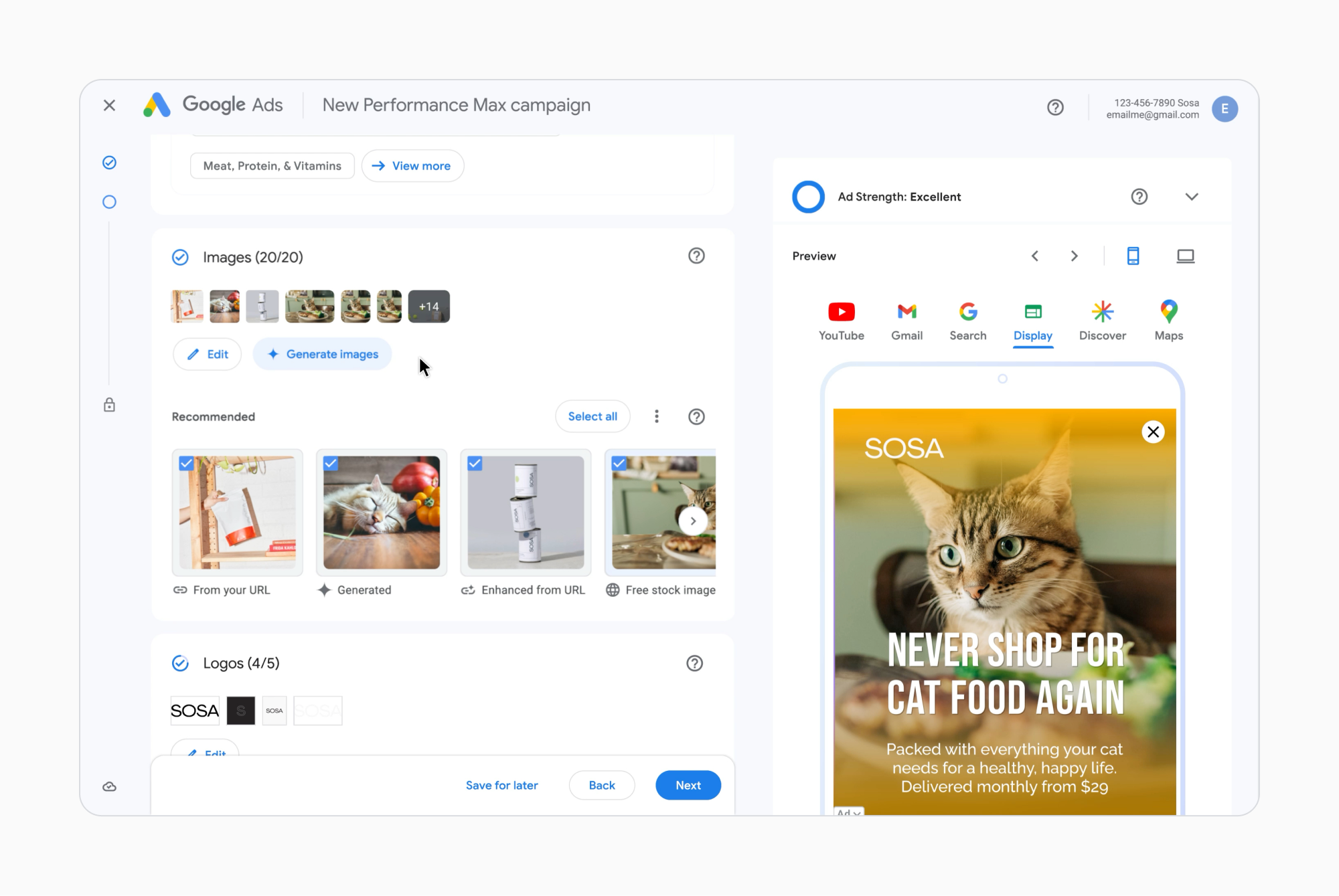 Screenshot from Google, May 2023
Screenshot from Google, May 2023This functionality is also extended to the new conversational interface within Google Ads, ensuring a seamless and engaging user experience.
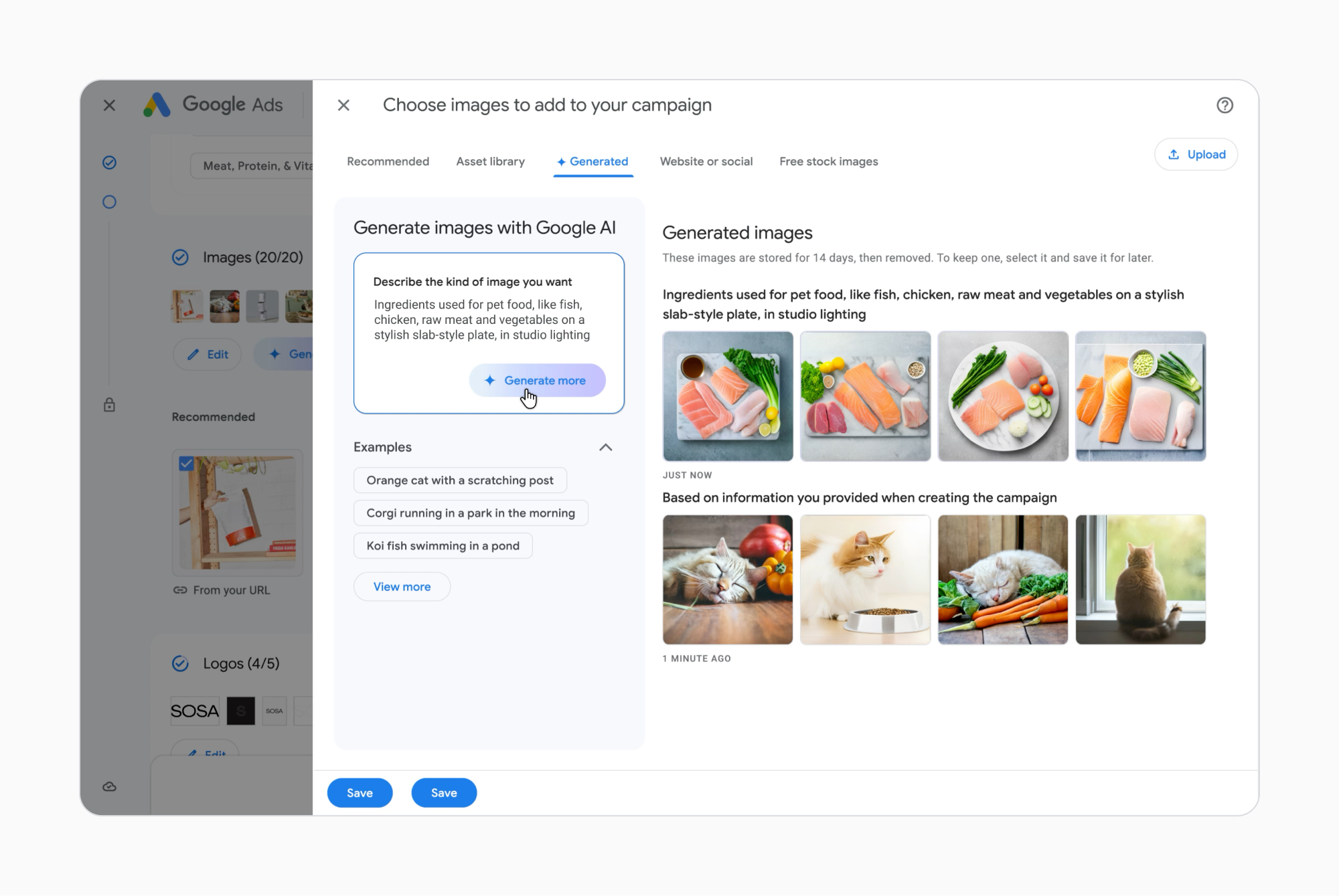 Screenshot from Google, May 2023
Screenshot from Google, May 2023Ad Formats In Search Generative Experience (SGE)
During the recent Google I/O event, Google announced forthcoming generative AI capabilities for Search, intending to make the service more intelligent and user-friendly.
These advancements could shape the future of advertising, offering increased opportunities to expand your business and showcase your brand.
Demonstrations from the Google I/O event highlighted how advertisements could be situated above and below this new experience.
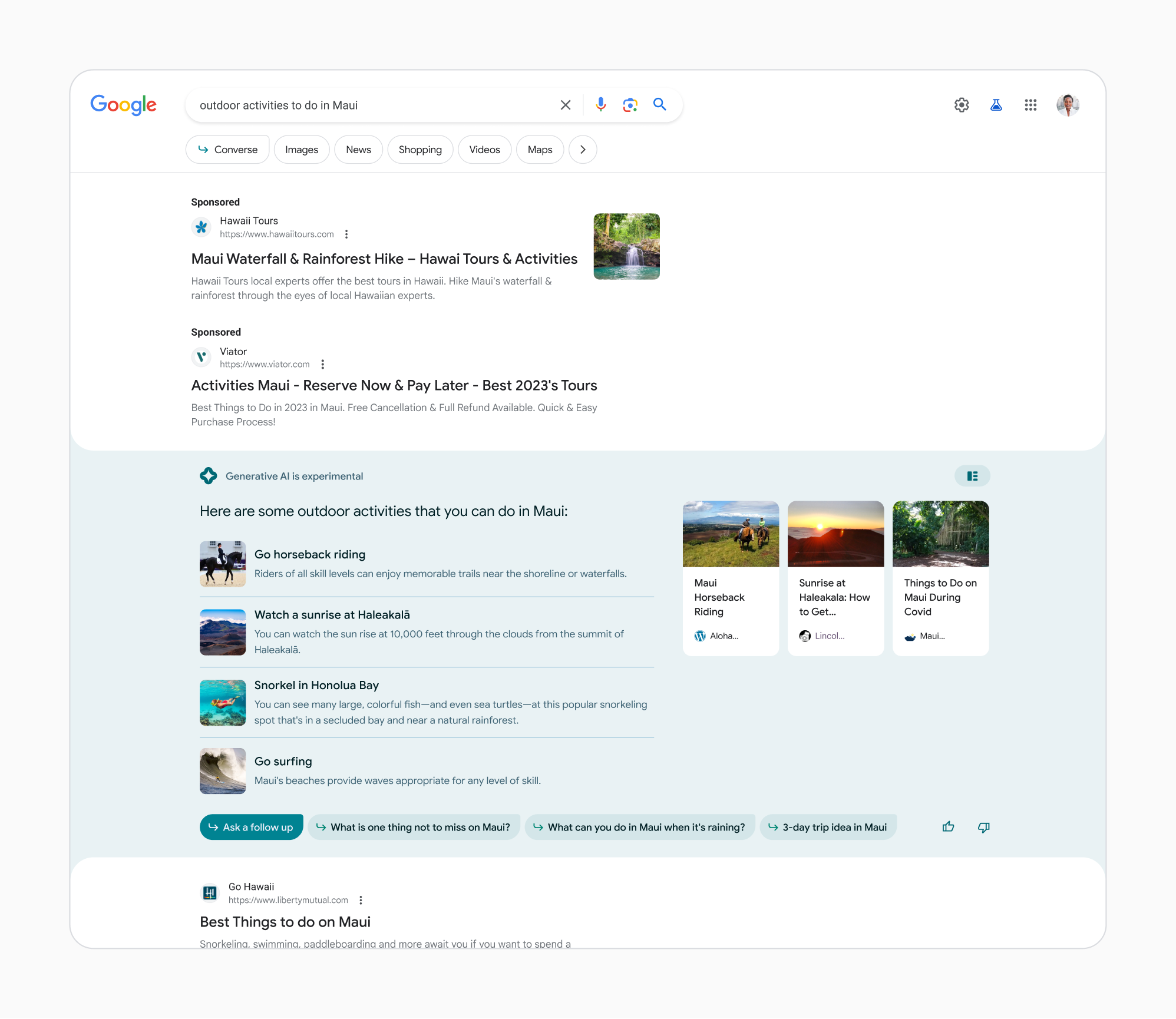 Screenshot from Google, May 2023
Screenshot from Google, May 2023Over the next several months, Google will test out Search and Shopping ads directly integrated within AI-powered snapshot and conversational modes.
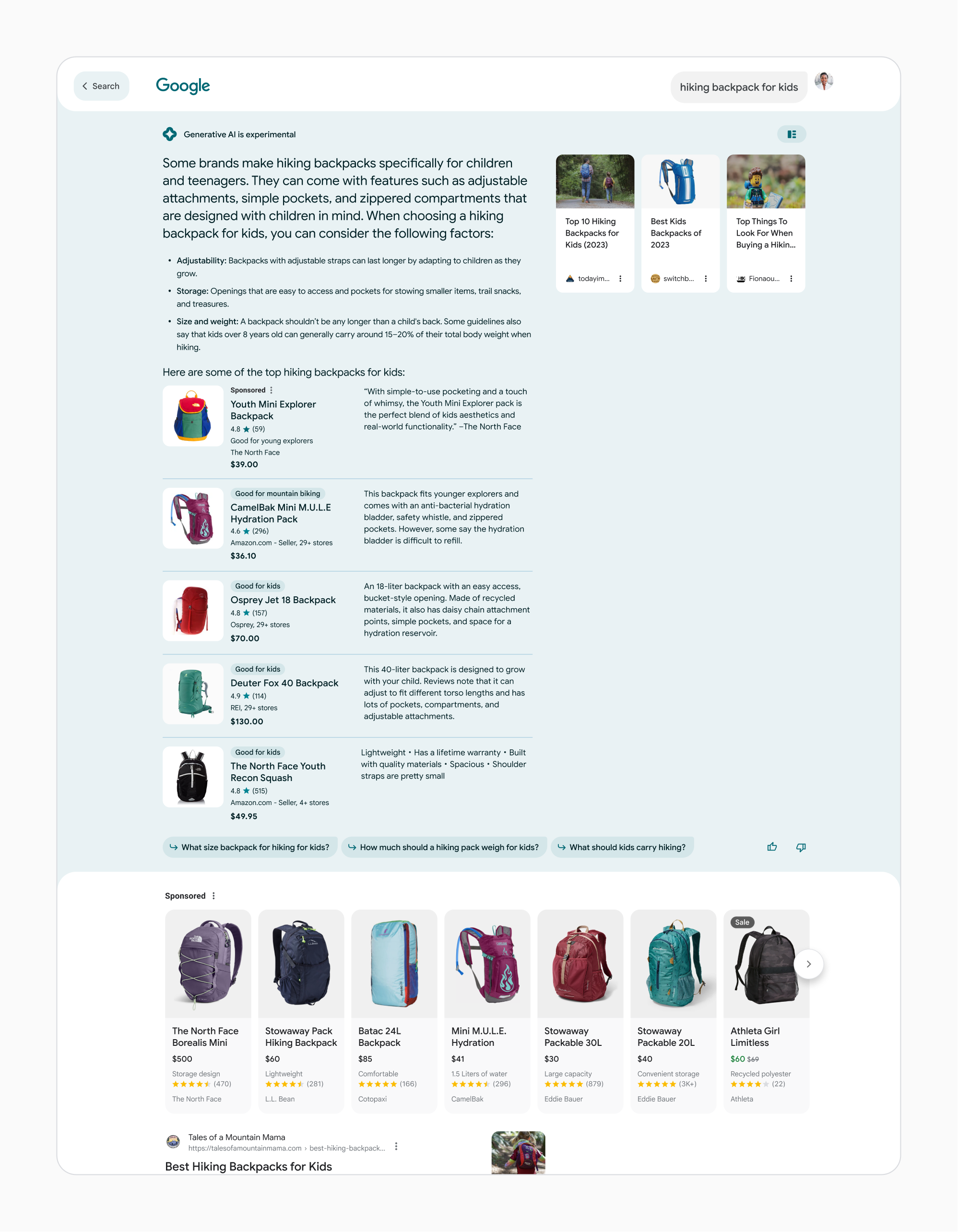 Screenshot from Google, May 2023
Screenshot from Google, May 2023Experimentation will also focus on new ad formats native to SGE, leveraging generative AI to deliver relevant, high-quality ads tailored to each step of the search journey.
For instance, if a user is researching “outdoor activities to do in Maui,” and then refines the search to “activities for kids” and “surfing,” they might encounter a uniquely customized ad from a travel brand offering surfing lessons for kids.
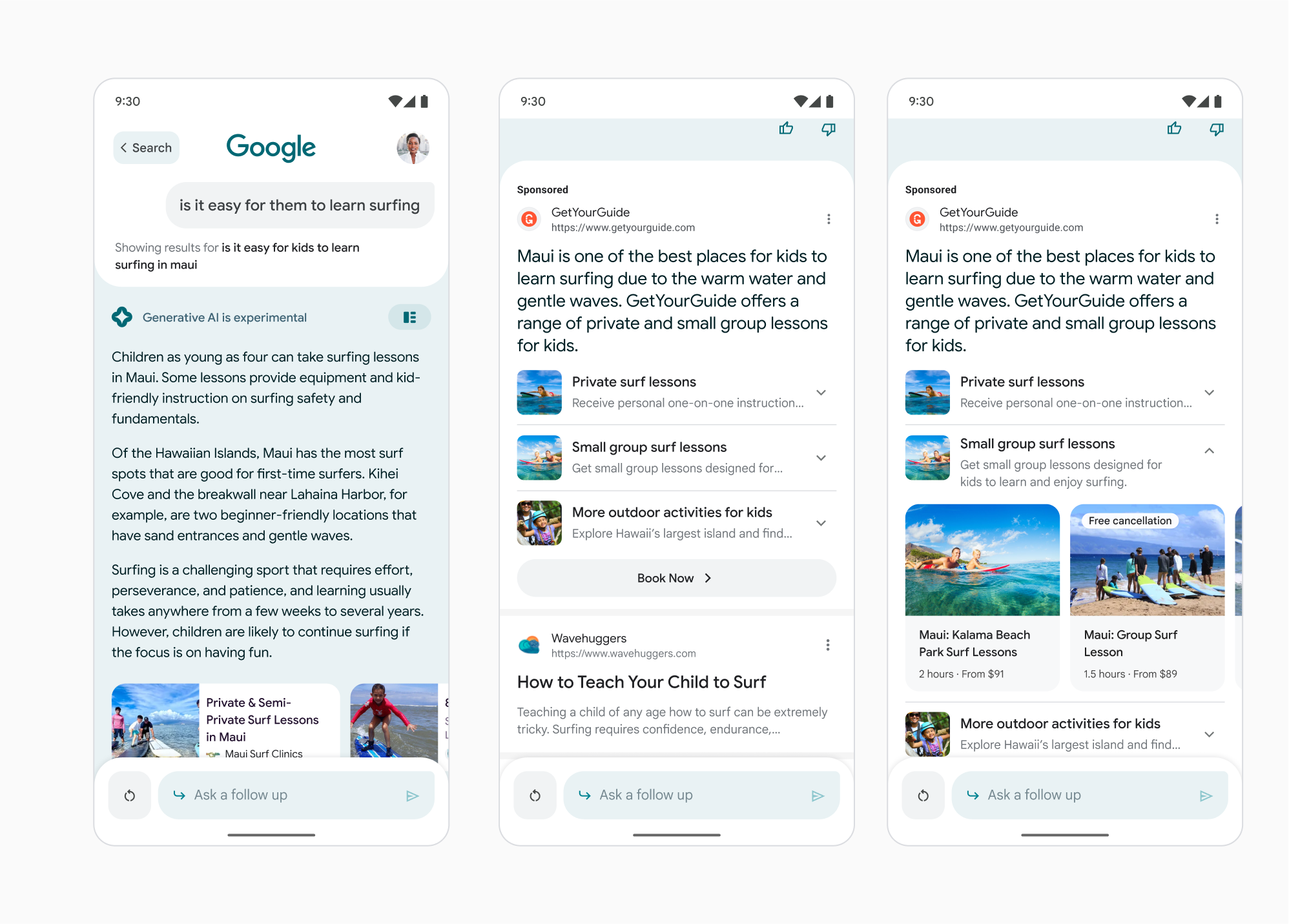 Screenshot from Google, May 2023
Screenshot from Google, May 2023Search Generative Experience (SGE) is accessible through Search Labs, Google’s hub for experimental Search functionalities.
Google reaffirms its commitment to transparency by ensuring advertisements remain distinguishable from organic search results with a bold “Sponsored” label.
Product Studio Generative AI Features
Based on Google’s data, product listings featuring more than one image have witnessed a 76% increase in impressions and a 32% boost in clicks. The process of creating distinct content can often be resource-intensive and time-consuming.
To address this issue, Google will introduce Product Studio. This innovative tool, integrated into Merchant Center Next, harnesses generative AI to aid merchants in crafting unique product imagery.
The simplified platform of Merchant Center Next assists businesses in managing their product display on Google.
In e-commerce, striking images serve as a digital storefront, potentially boosting outcomes for merchants with a well-curated mix of online imagery.
Product Studio, built with Google’s AI Principles at its core, hopes to bridge this gap. It brings the advantages of generative AI to businesses of all sizes, facilitating the creation of unique and customized product imagery without any cost and enabling businesses to maximize the value of their existing images.
Using a text-to-image AI model, the Scene Generation feature will facilitate the creation of lifestyle product imagery from basic product photos for merchants by interpreting brief descriptions of desired scenes, thereby eliminating the need for expensive and time-consuming photoshoots.
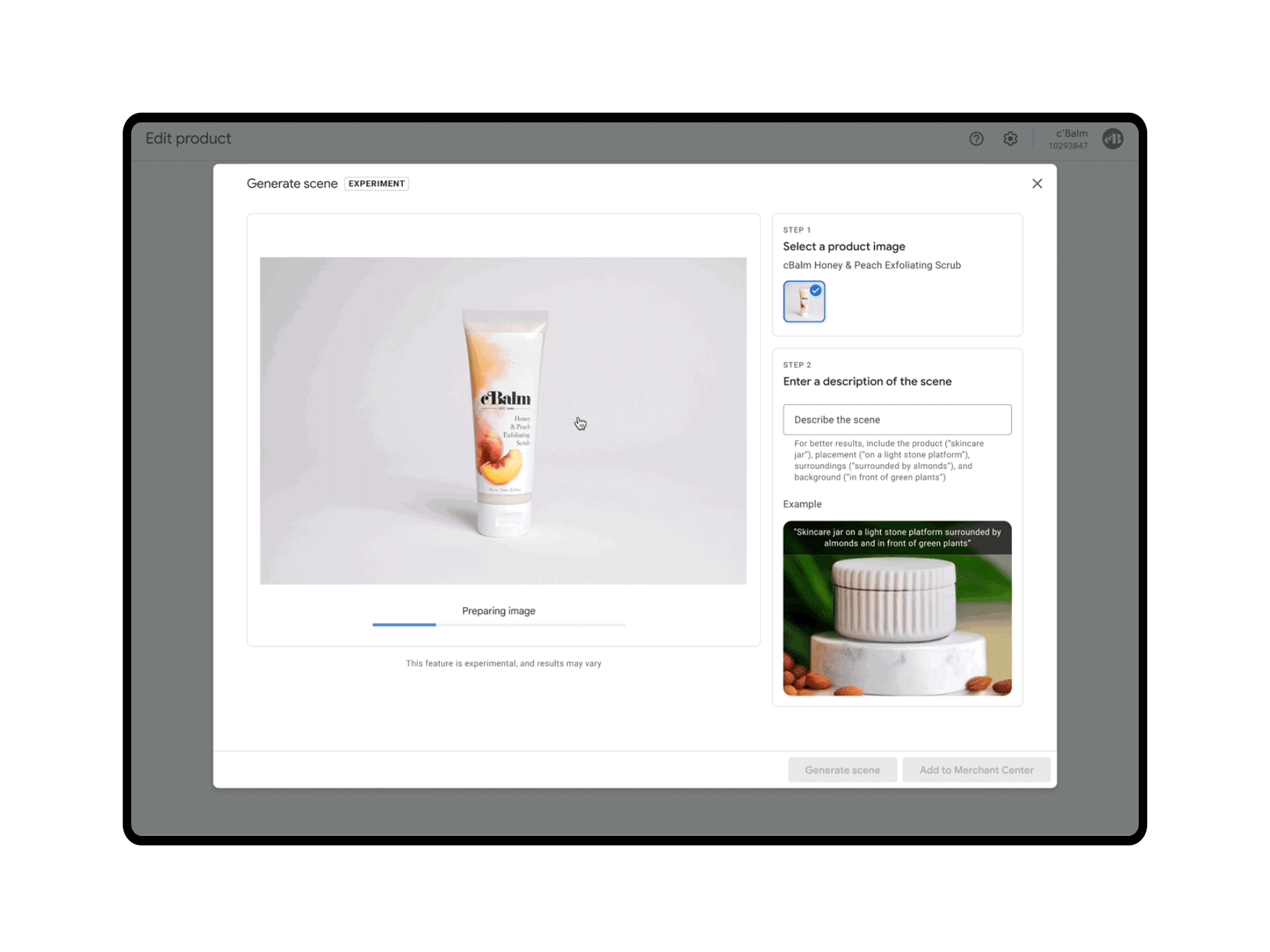 Screenshot from Google, May 2023
Screenshot from Google, May 2023The Remove Background feature will allow advertisers to create distraction-free product imagery.
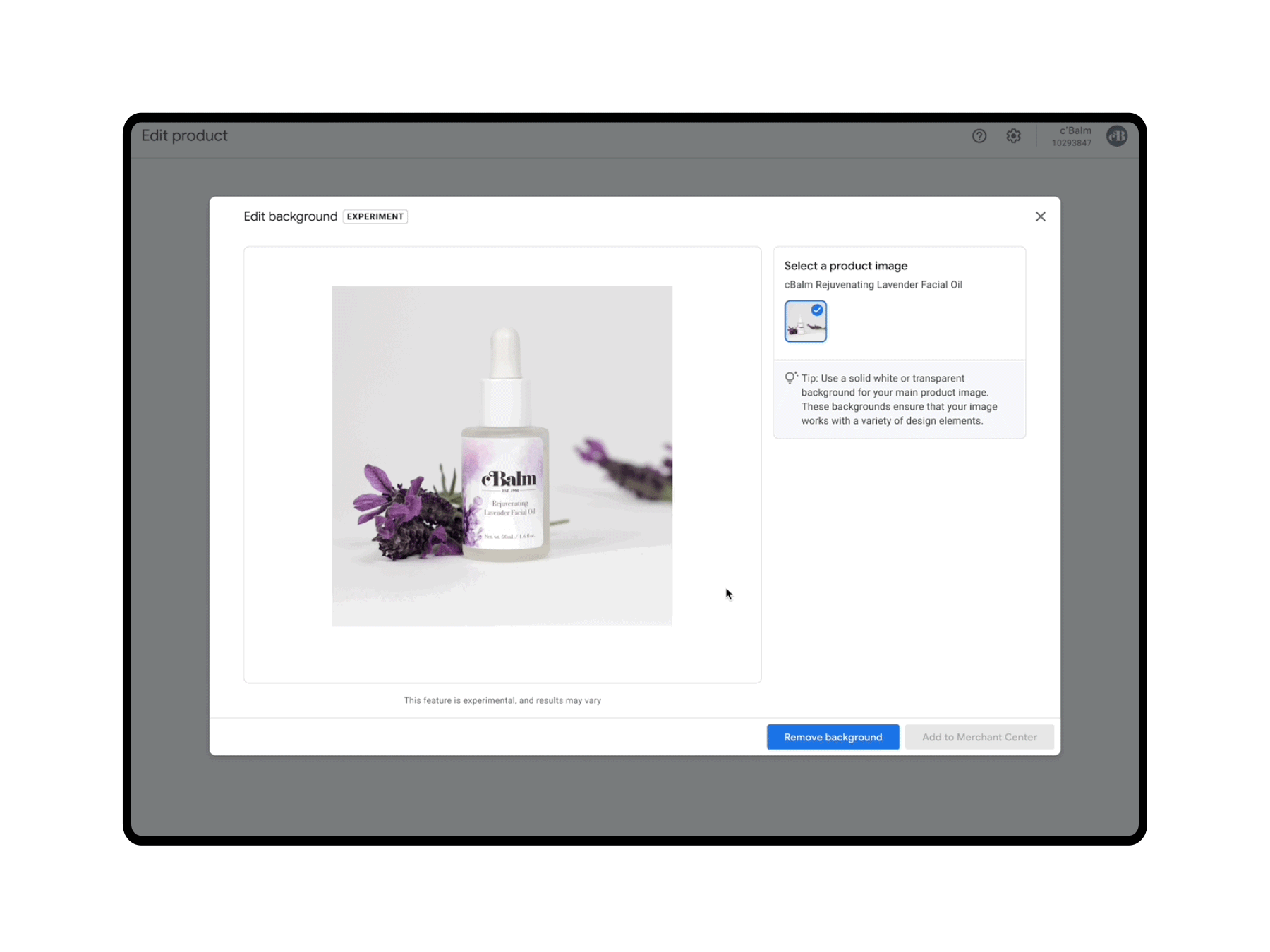 Screenshot from Google, May 2023
Screenshot from Google, May 2023The Increase Resolution feature will allow advertisers to improve the quality of images so they do not appear grainy or out-of-focus on phones with higher resolution.
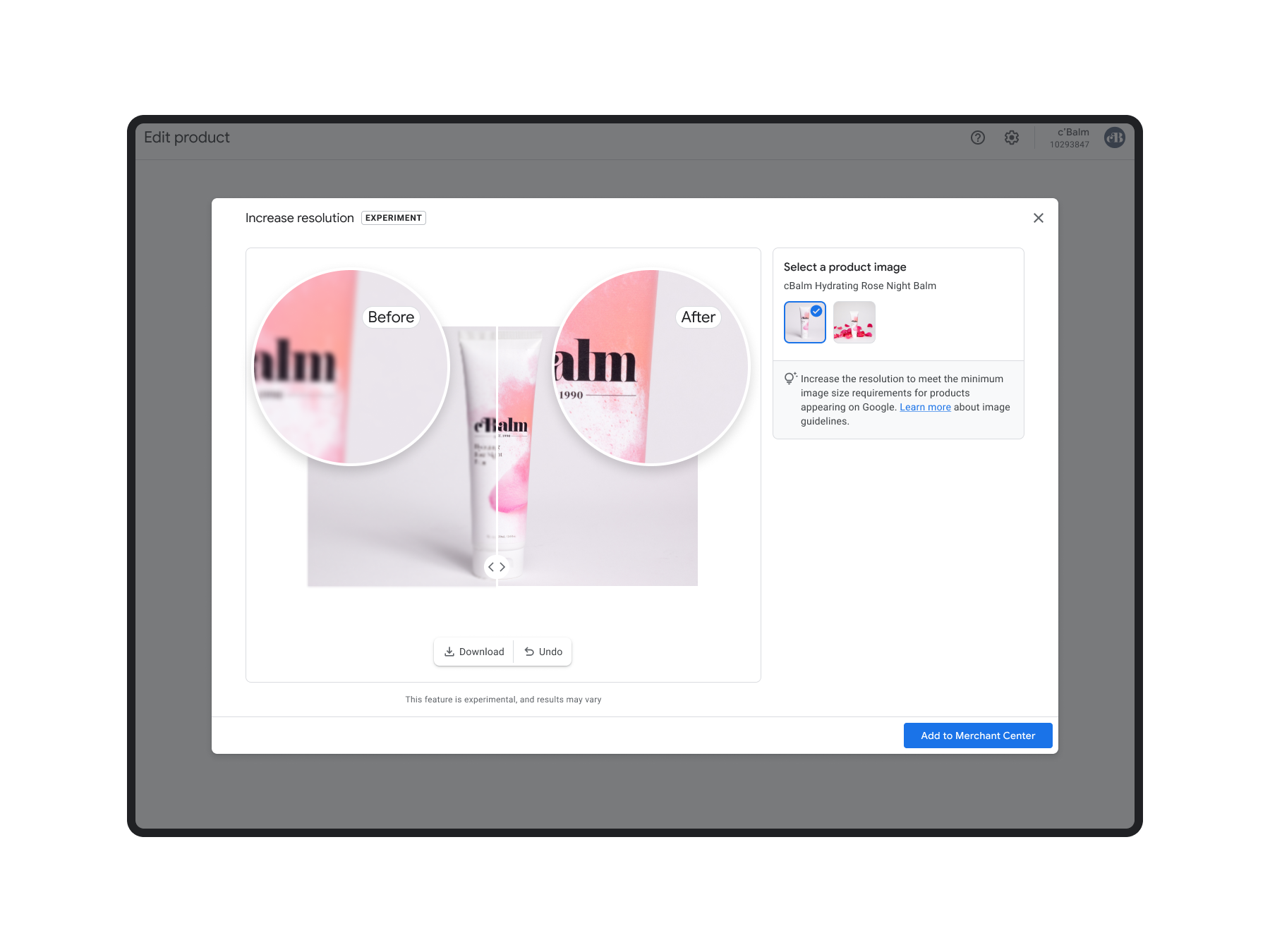 Screenshot from Google, May 2023
Screenshot from Google, May 2023Product Studio will be accessible later this year in the United States via Merchant Center Next and the Google & YouTube Channel App on Shopify, helping merchants conveniently generate images in the platforms where they currently oversee their Google presence.
Merchant Center Next
Over the past two years, the user base of Merchant Center has doubled, a trend Google hopes to continue by making the platform even more user-friendly.
Merchant Center Next is a streamlined version of the platform engineered to assist smaller businesses in establishing their online presence and fostering growth.
One of the significant improvements includes a simplified process for setting up a product feed.
Unlike in the past, when merchants had to input product details manually, Merchant Center Next will automatically populate the product feed using detectable information from the merchant’s website. The merchant can edit or deactivate this auto-fill function, ultimately making it faster to showcase their products across Google.
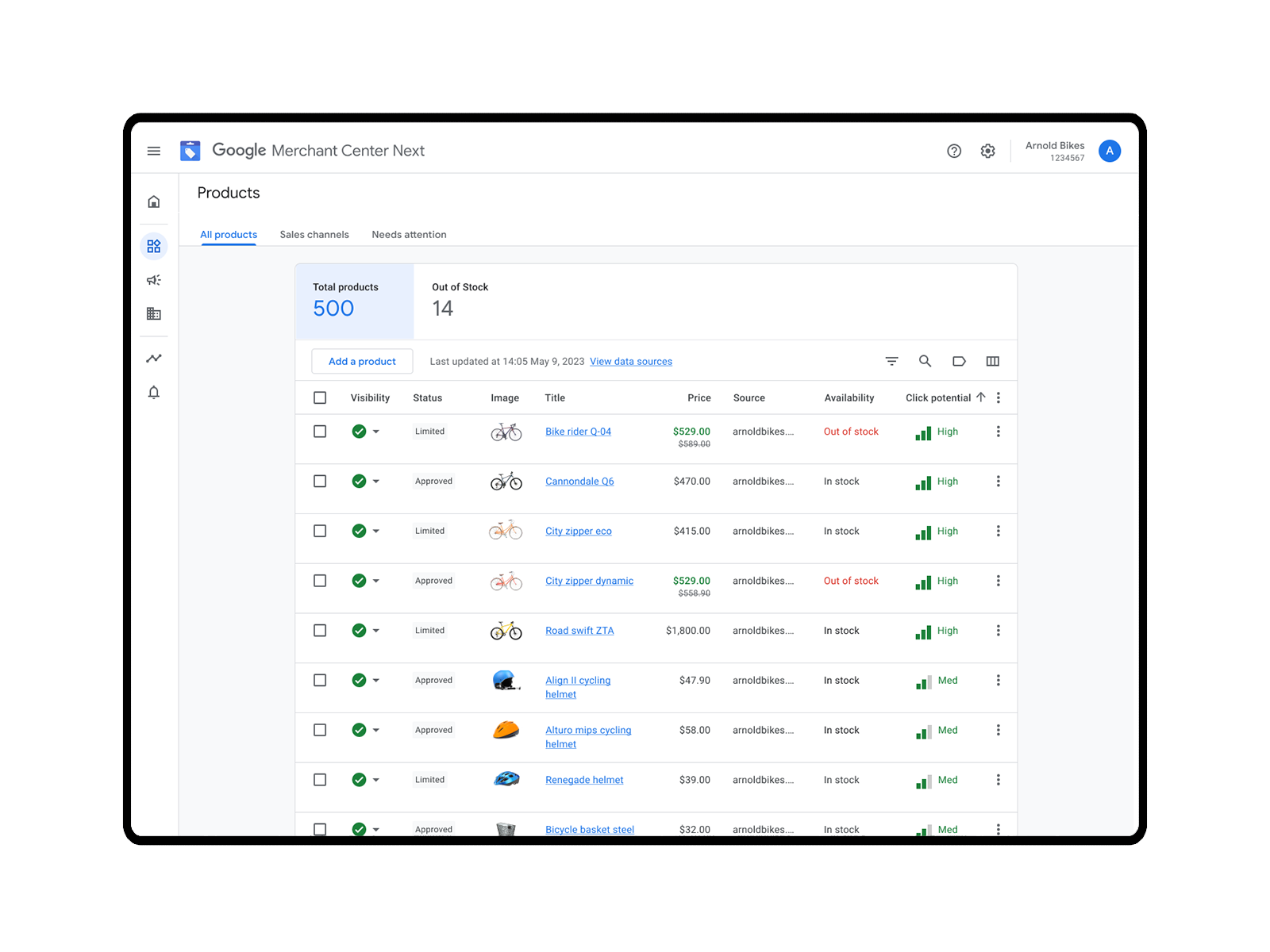 Screenshot from Google, May 2023
Screenshot from Google, May 2023Furthermore, Google is enhancing the accessibility and comprehensibility of performance insights by consolidating all insight reports into the Performance tab.
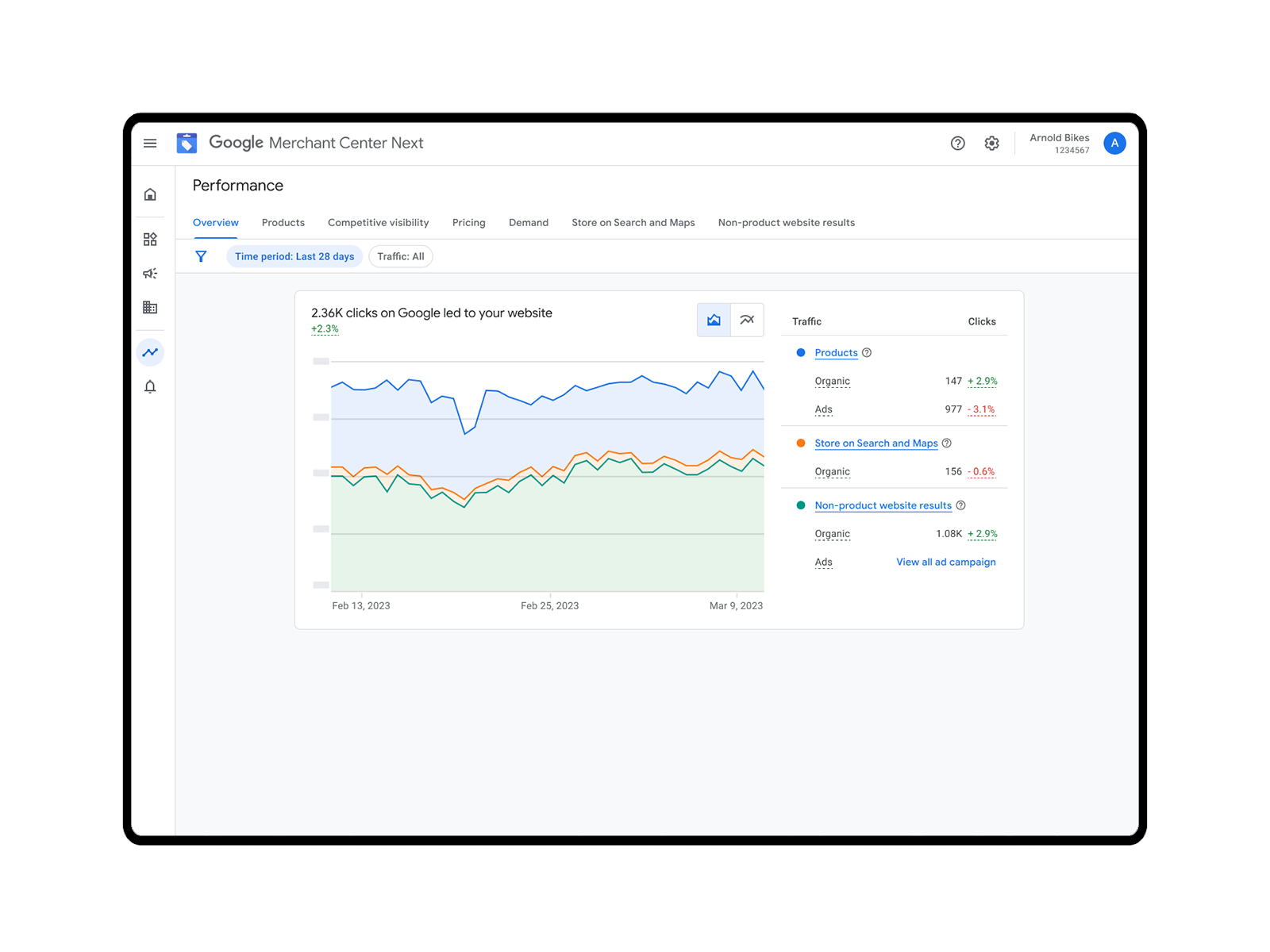 Screenshot from Google, May 2023
Screenshot from Google, May 2023This consolidation should allow merchants to review their top-selling products, identify their competitors, and understand how shoppers interact with their local businesses on Search and Maps, all in one place.
For merchants operating both online and brick-and-mortar stores, Merchant Center Next will present all products in a unified view, simplifying product inventory management across channels. Additional insights on the potential advantages of rectifying product data errors will also be provided to aid merchants in prioritizing updates.
The rollout of Merchant Center Next has already begun for new users. Google aims to progressively upgrade smaller businesses in the coming months and complete the global rollout by 2024. Merchants will be notified when the new experience is ready for their use.
Q&A With The Press
At yesterday’s Google Marketing Live: Press Roundtable, we heard the following speakers give answers to questions from members of the press.
- Brian Burdick, Sr Director of Ad Automation at Google
- Jeff Harrell, Senior Director of Shopping at Google
- Dan Taylor, Vice President of Global Ads at Google
Is There A Limit To Generative AI Responses?
There are no limits to the number of responses you receive while using conversational experience. Still, there will be a limit to the number of AI-generated assets that can be put into your ad rotation.
Since many of these features are in the experimental stages, these limits have yet to be set.
Will Ads Be Labeled As Generated By AI?
Ad images may include metadata that indicates they were AI-generated. Otherwise, ads will be labeled as Sponsored to ensure they stand out from organic results.
What About Click Through Rates For Publishers?
Google wants to reassure publishers that they will be front and center in the new SGE that has depended on organic search traffic to drive programmatic ad revenue.
What Is The Ad Strength Parameter?
To help advertisers create better ads, Google has added an ad strength parameter that measures the quality and relevancy of an advertiser’s landing page, keywords, and ad copy.
Advertisers can see the change in ad strength as they edit different aspects of their ad, allowing them to immediately see the advertisements that should lead to the best results.
Will AI-Generated Ads Look Similar?
Ideally, since Google Ads AI will generate images, headlines, and descriptions based on each advertiser’s unique landing pages and ad copy, ad creatives generated by AI should have a branded distinction.
(This is assuming that the content on your landing page and the ad copy in your account are unique to your brand.)
Watch Google Marketing Live 2023
Watch Google Marketing Live 2023 online by registering at the event website. SEJ will continue coverage of the event and update you on the latest developments in Google AI for marketing.
Featured image: rafapress/Shutterstock
